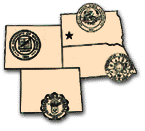Animal Science, Department of

Range Beef Cow Symposium
Date of this Version
2013
Document Type
Article
Citation
Range Beef Cow Symposium XXIII, December 3-5, 2013, Rushmore Plaza Civic Center, Rapid City, SD.
Abstract
The term cloning first entered our vocabulary with “Dolly” the cloned sheep in 1996. At that point it seemed unlikely that somatic cell nuclear transfer would benefit agricultural and some might still hold that argument true today. Since the cloning of Dolly, numerous species have been cloned, including cattle and horses. The overwhelming majority of all clones produced have been created by taking a tissue biopsy from an outstanding individual, most likely an outstanding sire or dam that was alive at the time of tissue biopsy. In contrast we chose to start with the end product and work backwards. At West Texas A&M, we questioned what really defined outstanding. For us outstanding was the end product of the beef chain, the carcass. In 2010, West Texas A&M partnered with an elite group of individuals, outside of the university in an attempt to use cloning technology to produce bulls and heifers from the highest USDA quality and yield grade carcasses, Prime Yield Grade 1. Cattle that grade USDA Prime are approximately 2.25% of the fed beef population – carcasses that are stamped with a yield grade of 1 are 12.4% of fed beef (Moore et al., 2012). Of the 20 possible combinations of quality (Prime, Choice, Select, Standard) and yield (1, 2, 3, 4, 5) grades that occur within the young fed beef population, the probability of a Prime, yield grade 1 carcass is approximately 0.03% of the fed beef in the U.S.


Comments
Copyright © 2013 Dean Hawkins, Ph.D. and Ty Lawrence, Ph.D.